Pronghorn antelope. Speed goat. Prairie devil. The animal doesn’t exactly conjure up images of high vistas or epic mountain scenery, but in certain areas of basin country in the American West, they live in some remarkable places: sagebrush-laden basins; headwaters of the great rivers; giant, deep, broken, meandering coulees, that cut the vast and seemingly endless landscape. A place lost in time, between the lowland agriculture fields and the vast wilderness of the high peaks. A wildness remains. I feel a connection to the ancient ones, that carried hand hewn bows in hand, chasing bison to their deaths. The vistas are second to none, and the pronghorn that roam these mountains dwell in country built for wild mountain species; massive, sweeping valleys that appear to run endlessly towards rugged peaks in the distance. I have hunted these animals in nearly every corner of my home state, but nothing compares to bow hunting them in the rugged, high prairie.
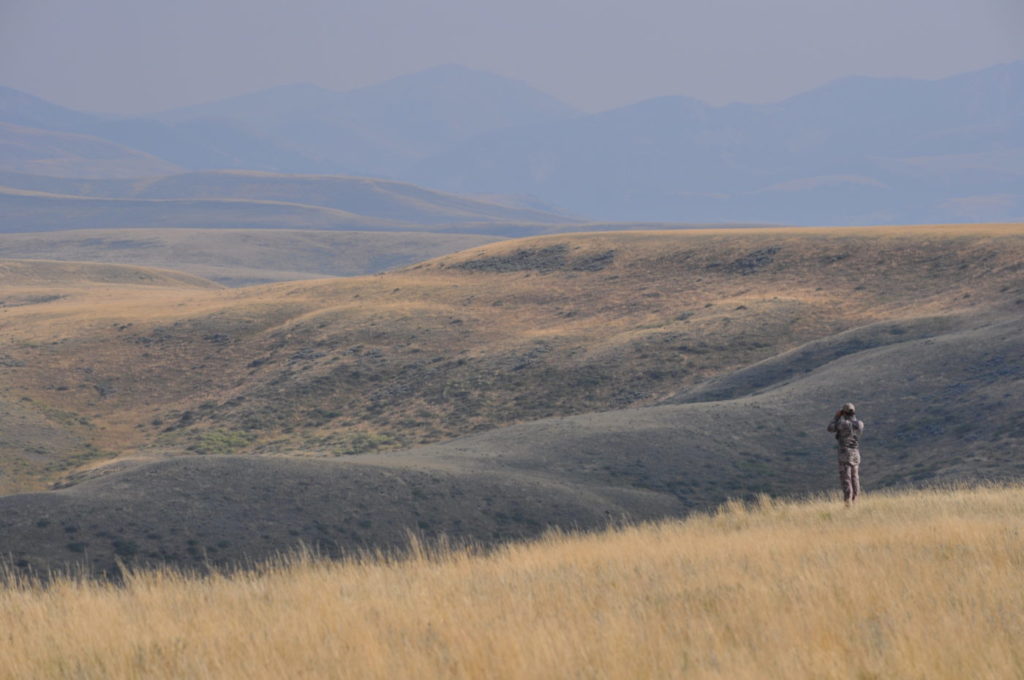
I arrived late-afternoon – one of the only times I have ever slept in past an alarm during the season. I set up my tent and went out to find Josh. I made my way up the canyon, being mindful of goats bedded in the sage, since we always see a few really close to camp. I was en route to a lone bush, high on a ridge that is the only bit of shade for miles and the best lookout over three major basins. It was a favorite haunt of the herd.
It didn’t take long to start turning up goats, but I still hadn’t found Josh. I didn’t want to mess up his hunt by rushing in on a goat he was pursuing. After a few hours and no sign of him, I watched a big buck with a harem of does bed down in a prime zone for a bow stalk. Now, speed goats don’t exactly lie bedded for long, so if you see one bedded you have around 20 minutes to get to them before they get restless and start wandering about the coulees. The terrain is deceptively steep; what appears to be a nice easy stalk up a gentle grassy ridgeline turns into an all-out, lung-busting, calf-burning, 1000-feet-of-elevation-gain-at-a-half-sprint-to-even-have-a-chance kind of stalk.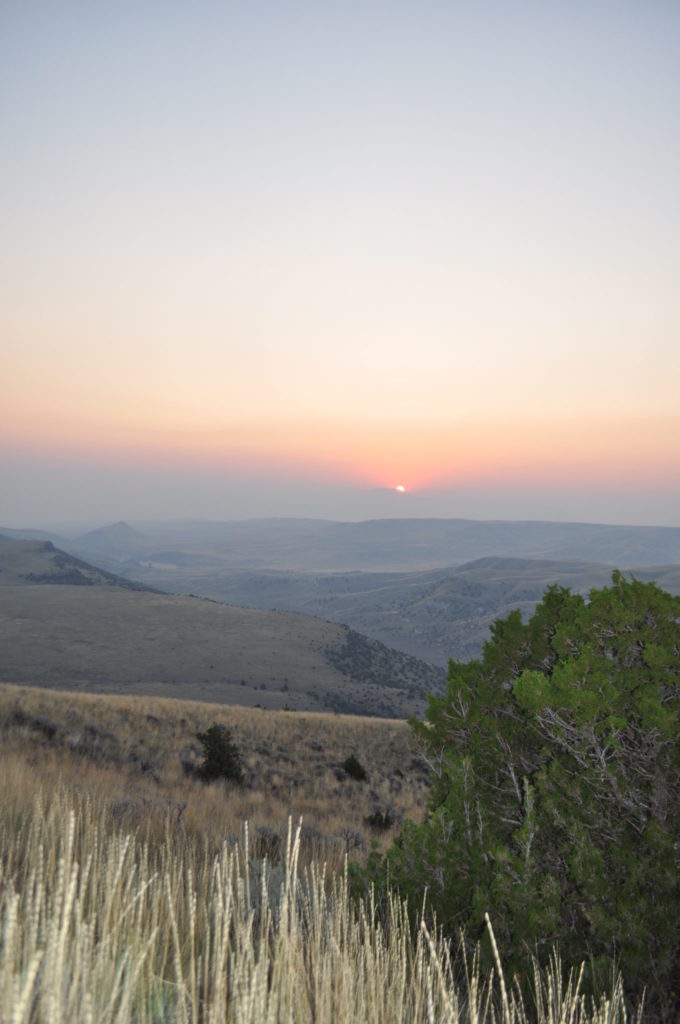
Unbeknownst to me, Josh had just shot this goat and was still set up on him, waiting for him to die. I felt like a jerk later, bumping a friend’s wounded buck. I still don’t know how we never saw each other. Turned out that at one point on our respective stalks I was no further than 80 yards from him!
After the buck wandered off, I continued up the coulee and found myself peering through the tall grass, 80 yards from a mature buck. There was just enough wind to cover any sound, and I had removed my shoes 100 yards down the ridge, navigating a minefield of prickly pear cactus in my socks. I knew I had little time for a shot; my wind was slowly drifting toward eight does bedded 30 yards below the buck. As I drew back, a heavy crosswind hit me and I was trying my hardest to stay on the buck at full draw, waiting for a brief calm in the gale. Within seconds I heard a distinct sneeze below me — a doe had winded me, and the jig was up. The herd thundered out of the draw down the ridge line and crossed the main coulee a mile and a half down.
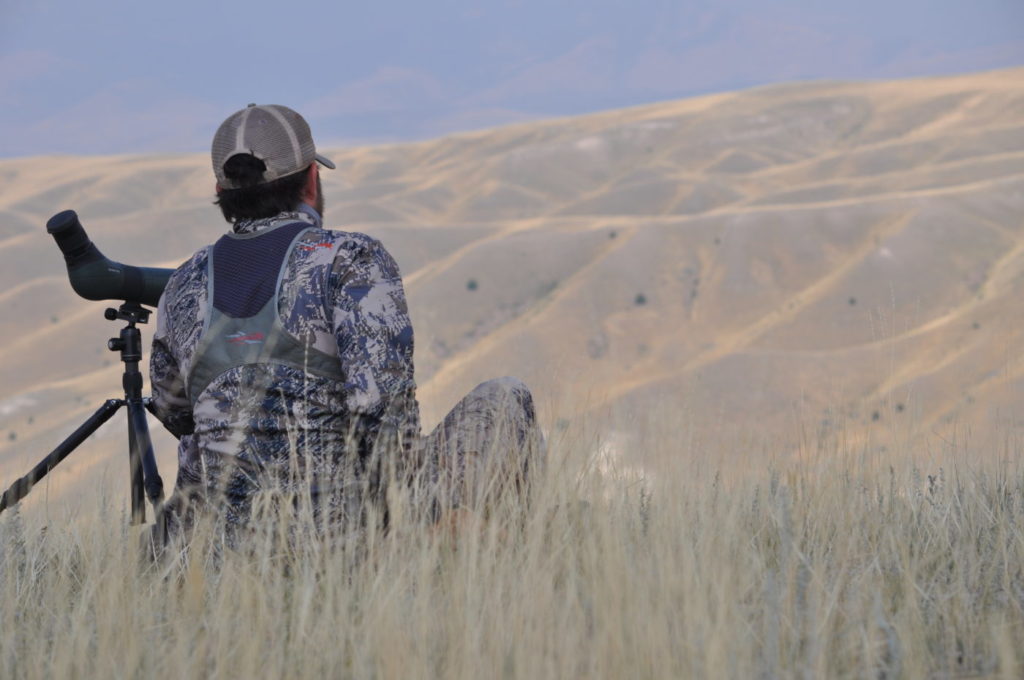
I made my way back to my motorcycle and was headed to camp when I saw a figure running at the base of the foothills, and a second later I identified the goat. After I had bumped his goat, Josh had been slowly following it, hoping to use some terrain to cut him off and get another arrow in him. I set up the spotter and was amazed this goat was still walking; the exit wound was right at heart level, and the outside of his right front leg was caked with dark blood. I could not believe I had missed that earlier, but my guess was the entry wound was dry and he was only bleeding from the exit. Incredible toughness for an animal that might have weighed 165 lbs.
The buck snuck around a ridge and Josh lost him. I tried to signal him but I wasn’t sure he knew I was there. I kept a close eye and watched the buck work over a ridge. I caught up with Josh and we were able to get back on him; he was pretty surprised to see me mid-stalk! We followed the buck and watched him bed at the edge of some tall sage. We snuck in closer, debating what to do. Like anyone, I hate to see an animal suffer but we really didn’t want to bump it again and have him take off and disappear forever. We sat patiently watching the buck and we were both relieved when we watched him take his last breath.
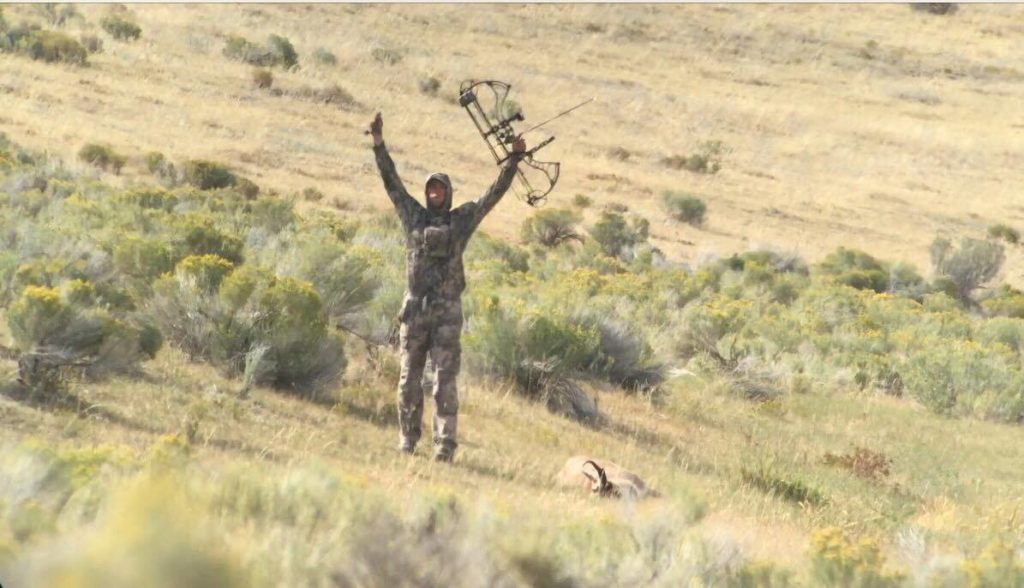
I suppose it was hunter’s intuition guiding me that day; I knew I was going to see some great action. It was a crisp, cold morning, with the smell of dew-soaked sage filling my nostrils as I made my way to my glassing bush. Speed goats are tough to spot in the dusk and dawn – their small, bedded bodies completely blend with the grasses and sage in these high prairie basins. Once the goats started moving around, I spotted a group of eight bachelor bucks, two miles out, and a few does I was certain had the big buck with them. I was intently watching them, straining to find the buck, when the herd disappeared in a fold near the top of the ridge.
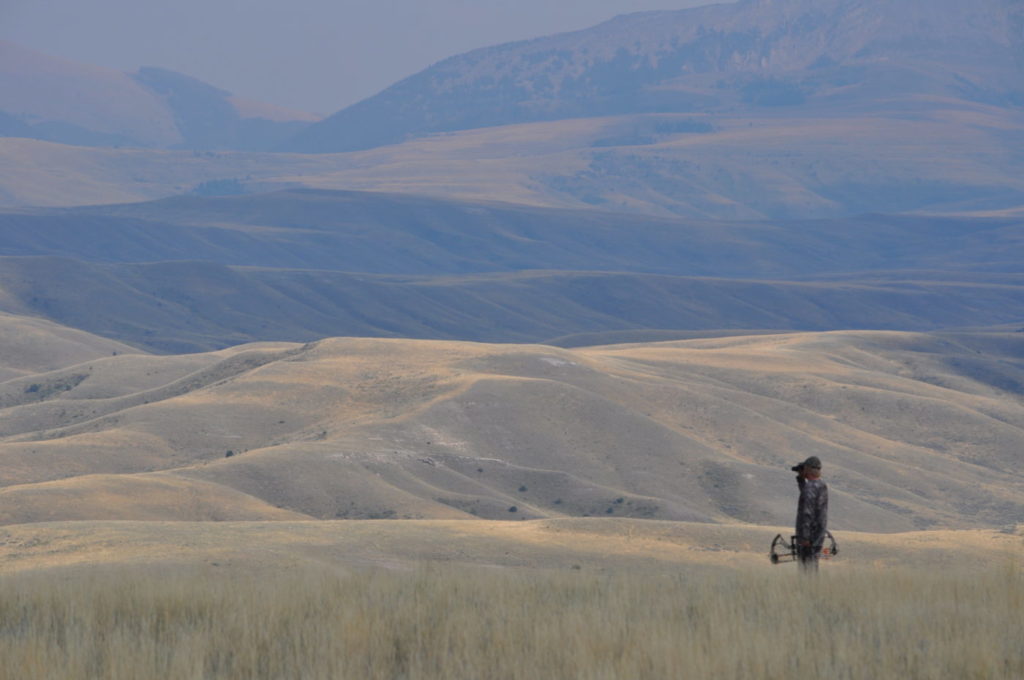
I quickly stuffed the spotter back into the pack, dropped down slightly in elevation and slowly worked my way closer, making sure to stay in the shade. I eased along, making sure I stayed below the line of sight of the does. I was getting very close. I was moving at a glacial pace, eyes peeled to the grass, scanning for the tips of antelope ears. I eventually saw four ears at no more that 80 yards. I sat on my knees, carefully slipped off my pack, and knocked an arrow.
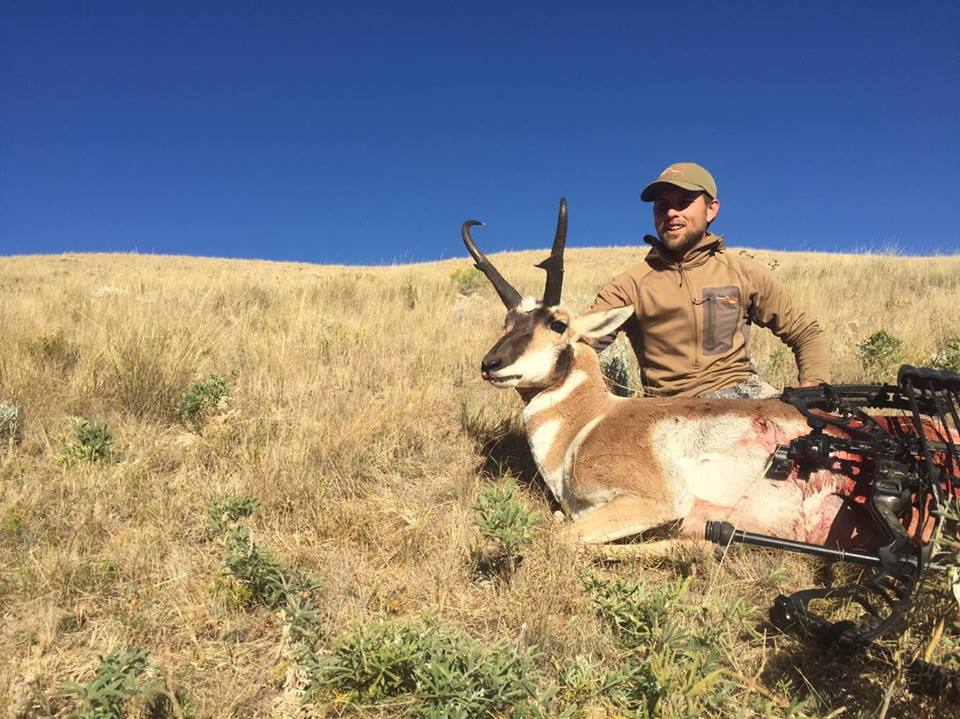
I drew back, put my pin on his shoulder, touched the release – the arrow flew perfectly but I watched in horror as my fletching passed inches over his back! To my amazement, he was so preoccupied by the other bucks that he didn’t even notice me. I ranged him again, knocked another arrow, and this time connected – hard. The arrow hit the buck in the spine, but the heavy FMJ fully passed through, dropping the buck instantly. My next arrow connected with the heart.
I went to the goat and thanked him for his life. I sat there for a moment, reveling in the final act of the drama, a life and death struggle, played on a grand stage; a high, broken prairie forgotten by time.
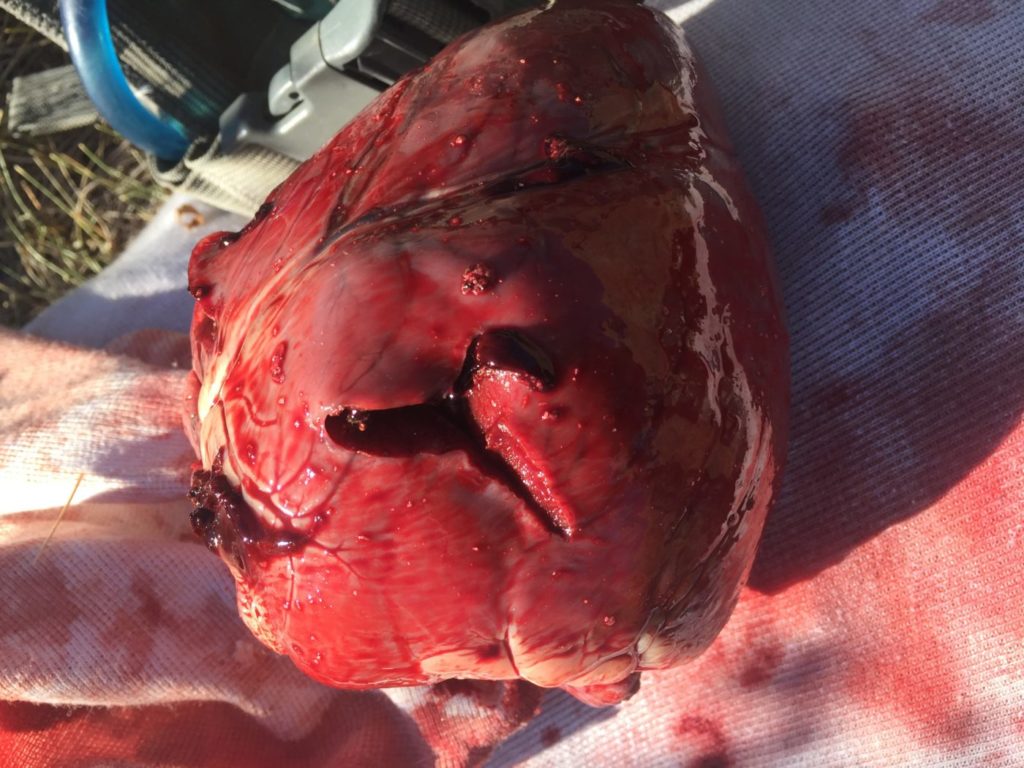
The weather heated up fast, so I made quick work of caping and deboning the whole goat and started the pack out, enamored with the country and the experience I was just been blessed with.
I was filled with an immense amount of pride that morning; trusting my instincts, being in tune with the landscape, and again taking part in the ancient ritual of the hunt. Drawing blood is undoubtedly the end goal, and the sense of accomplishment that goes along with it is intense – to be a provider in the same sense as the ancient ones whose entire lives revolved around the hunt. I feel that too often, this surreal experience is obscured by an ego-driven contest of inches, scores, and social media status updates, with the true connection with nature being lost somewhere in between – where one finds the real reason to be out there in the first place.

